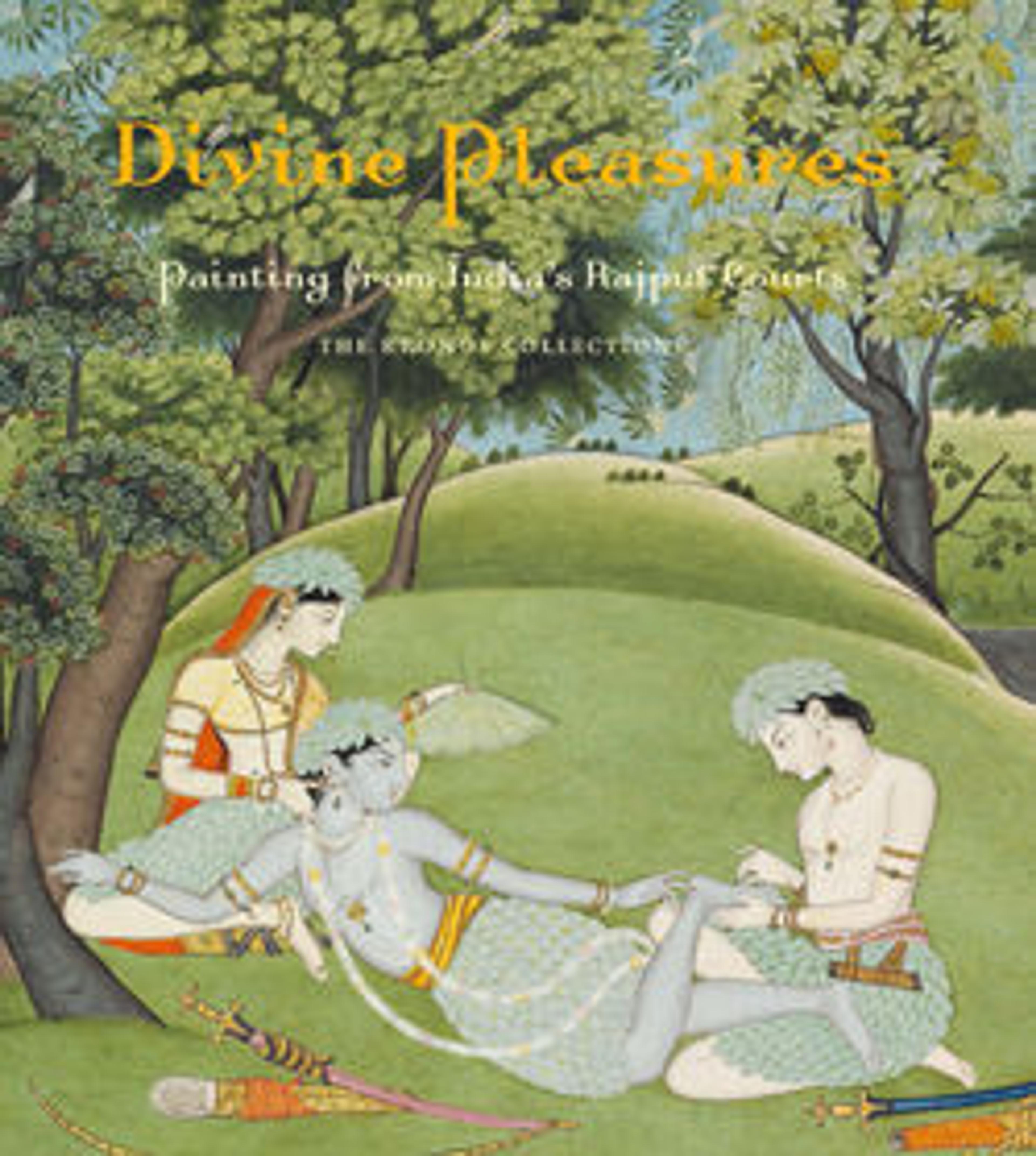"A Muslim Pilgrim Learns a Lesson in Piety from a Brahman", Folio from a Khamsa (Quintet) of Amir Khusrau Dihlavi
The Khamsa (Quintet) of the Indian poet Amir Khusrau Dihlavi localizes its model, the Khamsa of Nizami, by rooting several of the stories in an Indian idiom. Likewise, the illustrations made for Akbar’s (r. 1556–1605) copy are set in typically Indian landscapes. Here, a Muslim pilgrim to Mecca meets a Brahman who travels to a Hindu temple by inching his way in a series of prostrations. Impressed by this religious zeal, the Muslim removes his own shoes and continues on his way barefoot.
Artwork Details
- Title: "A Muslim Pilgrim Learns a Lesson in Piety from a Brahman", Folio from a Khamsa (Quintet) of Amir Khusrau Dihlavi
- Author: Amir Khusrau Dihlavi (Indian, Patiyali, 1253–1325 Delhi)
- Calligrapher: Muhammad Husain Kashmiri (Indian, active ca. 1560–1611)
- Artist: Painting by Basawan (Indian, active ca. 1556–1600)
- Date: 1597–98
- Geography: Attributed to India
- Medium: Image: Ink, opaque watercolor, and gold on paper
Margins: Gold on dyed paper - Dimensions: Overall: H. 9 7/8 in. (25.1 cm)
W. 6 1/4 in. (15.9 cm)
Frame:H. 25 in. (63.5 cm)
W. 19 in. (48.3 cm)
D. 1 in. (2.5 cm) - Classification: Codices
- Credit Line: Gift of Alexander Smith Cochran, 1913
- Object Number: 13.228.29
- Curatorial Department: Islamic Art
More Artwork
Research Resources
The Met provides unparalleled resources for research and welcomes an international community of students and scholars. The Met's Open Access API is where creators and researchers can connect to the The Met collection. Open Access data and public domain images are available for unrestricted commercial and noncommercial use without permission or fee.
To request images under copyright and other restrictions, please use this Image Request form.
Feedback
We continue to research and examine historical and cultural context for objects in The Met collection. If you have comments or questions about this object record, please complete and submit this form. The Museum looks forward to receiving your comments.
